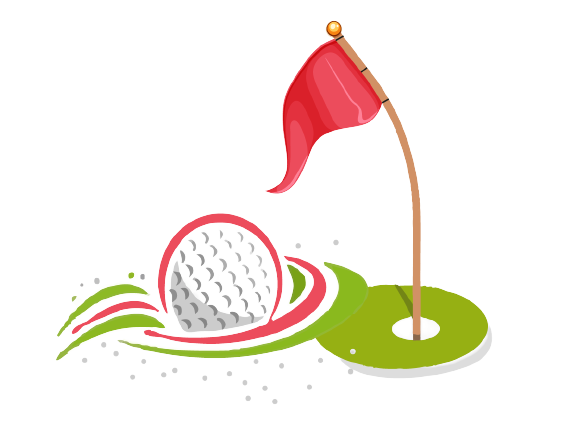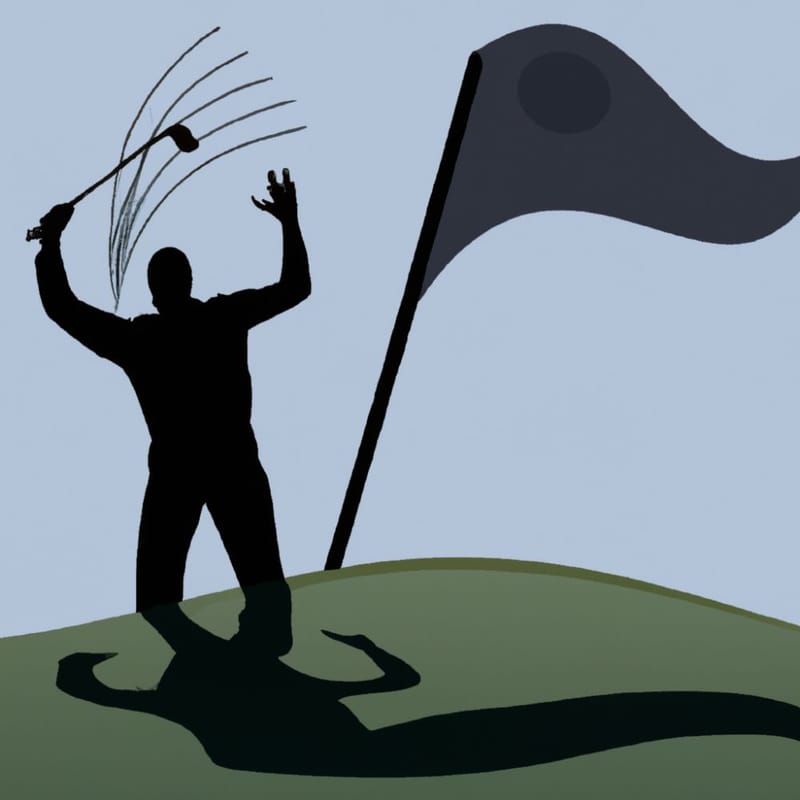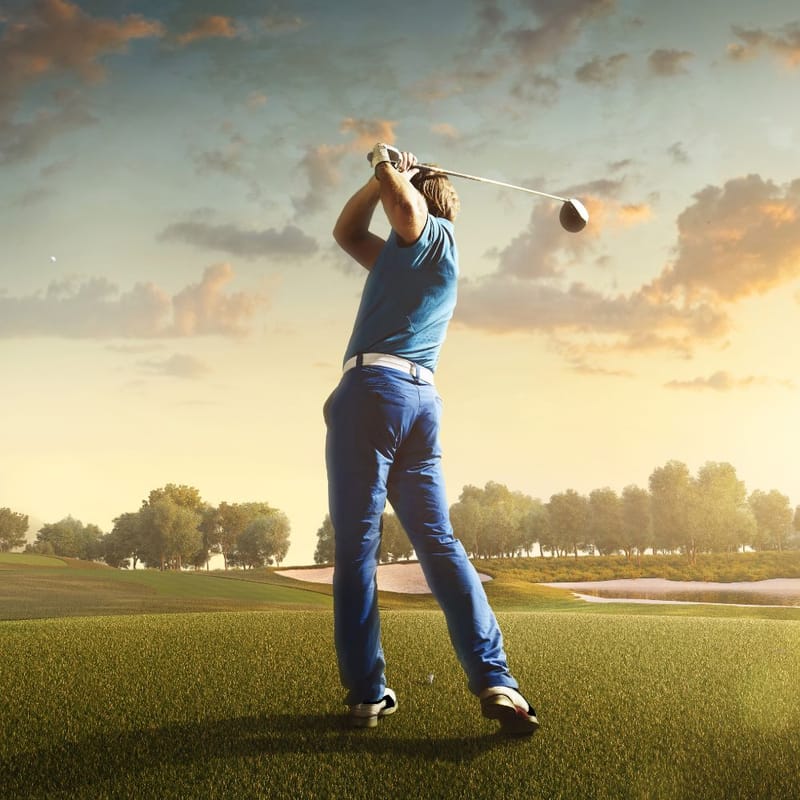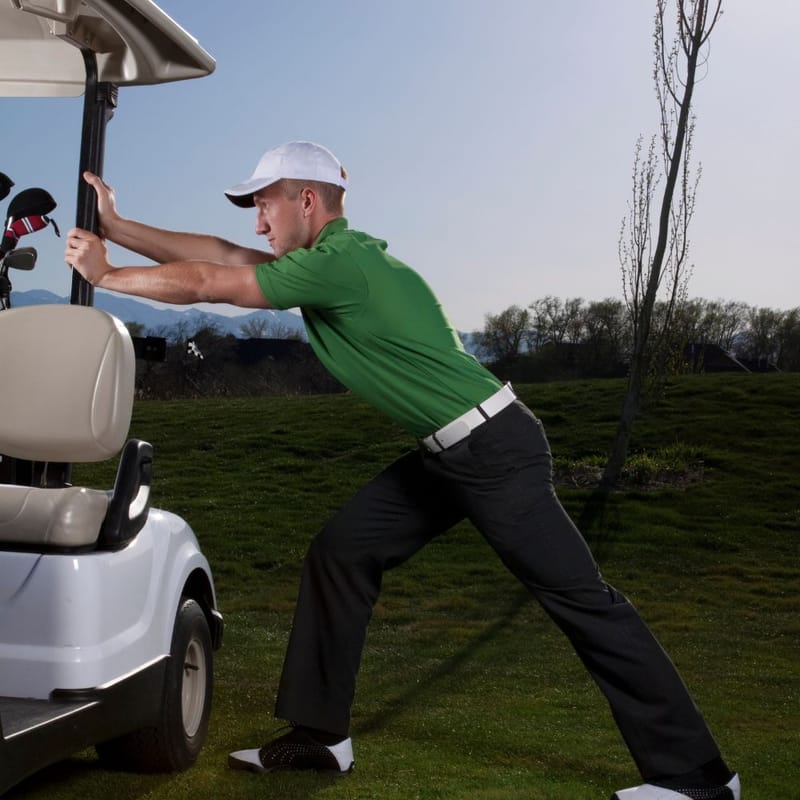Content Summary
Let's face it - finding the driver of your dreams can feel overwhelming. With so many options out there, how do you know which one is best for your swing? Don't worry, we've got you covered. We'll walk through all the key factors step-by-step so you can confidently choose a driver that delivers maximum distance and control.
One of the most vital components of a golfer's arsenal is the driver, as it sets the tone for almost every tee shot. Only the putter is used more often during a round of golf.
In this article, we will provide you with crucial facts to consider when making this important decision. From clubhead size and material composition to loft angles and shaft flexes.
Understanding these key elements will enable you to make an informed choice that aligns perfectly with your swing style and preferences. So strap in tight as we take you through an authoritative journey on how to choose a driver like a pro!
Factors to Consider When Choosing a Golf Driver:
When selecting a driver, there are a few key factors you should keep in mind:
- Clubhead Size: The size of the clubhead impacts forgiveness and distance. Larger clubheads offer more forgiveness but can be harder to control, while smaller ones provide precision but require greater skill.
- Shaft Flexibility: The flexibility of the shaft influences swing speed and accuracy. Stiff shafts are ideal for faster swingers seeking control, while flexible shafts accommodate slower swings for added distance.
- Material Construction: Drivers come in various materials such as titanium, steel, or composite alloys. Each material offers different characteristics like strength, weight distribution, and feel upon impact with the ball.
- Center of Gravity (CG): A driver's CG affects launch angle and spin rate. High CG drivers produce lower launches with less spin for increased rollout on fairways, while low CG drivers generate higher launches with more backspin for better carry distances.
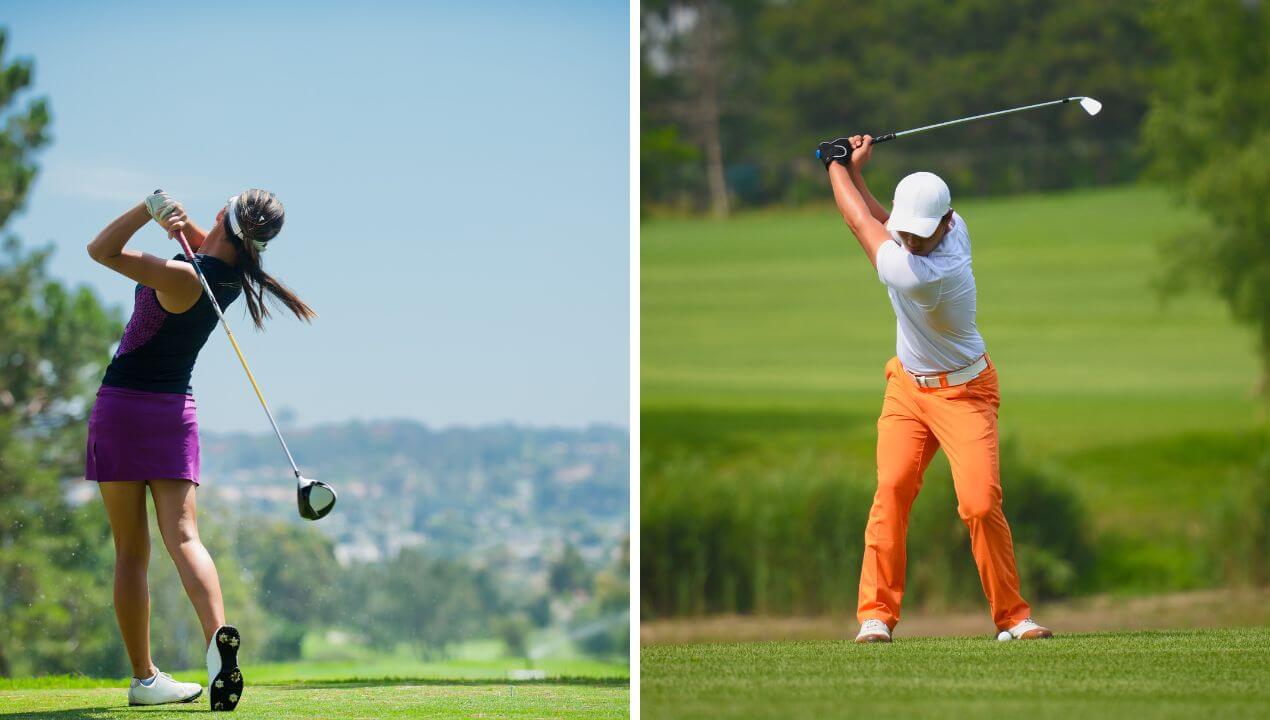
Popular Golf Drivers
TaylorMade, Titleist, Calloway, Ping, Cobra, Srixon, Mizuno, PXG
All products featured on GolfOften.com are researched and selected by our editors. However, when you buy something through us, we may receive a small commission at no additional cost to you.
Clubhead Size
When it comes to clubhead size, finding the right balance between forgiveness and control is crucial.
- A larger clubhead offers more forgiveness by providing a larger sweet spot. Meaning you can still achieve good distance and accuracy even on off-center hits.
- However, a smaller clubhead provides more control as it allows for better maneuverability and precision when targeting specific areas of the fairway.
- Beginners or high handicappers may benefit from a larger clubhead that offers forgiveness while they work on improving their swing.
- Advanced players who prioritize accuracy over forgiveness may opt for a smaller clubhead that allows for greater control.
Finding the perfect balance between maximum forgiveness and control in terms of clubhead size is essential to make your best shots on the golf course.
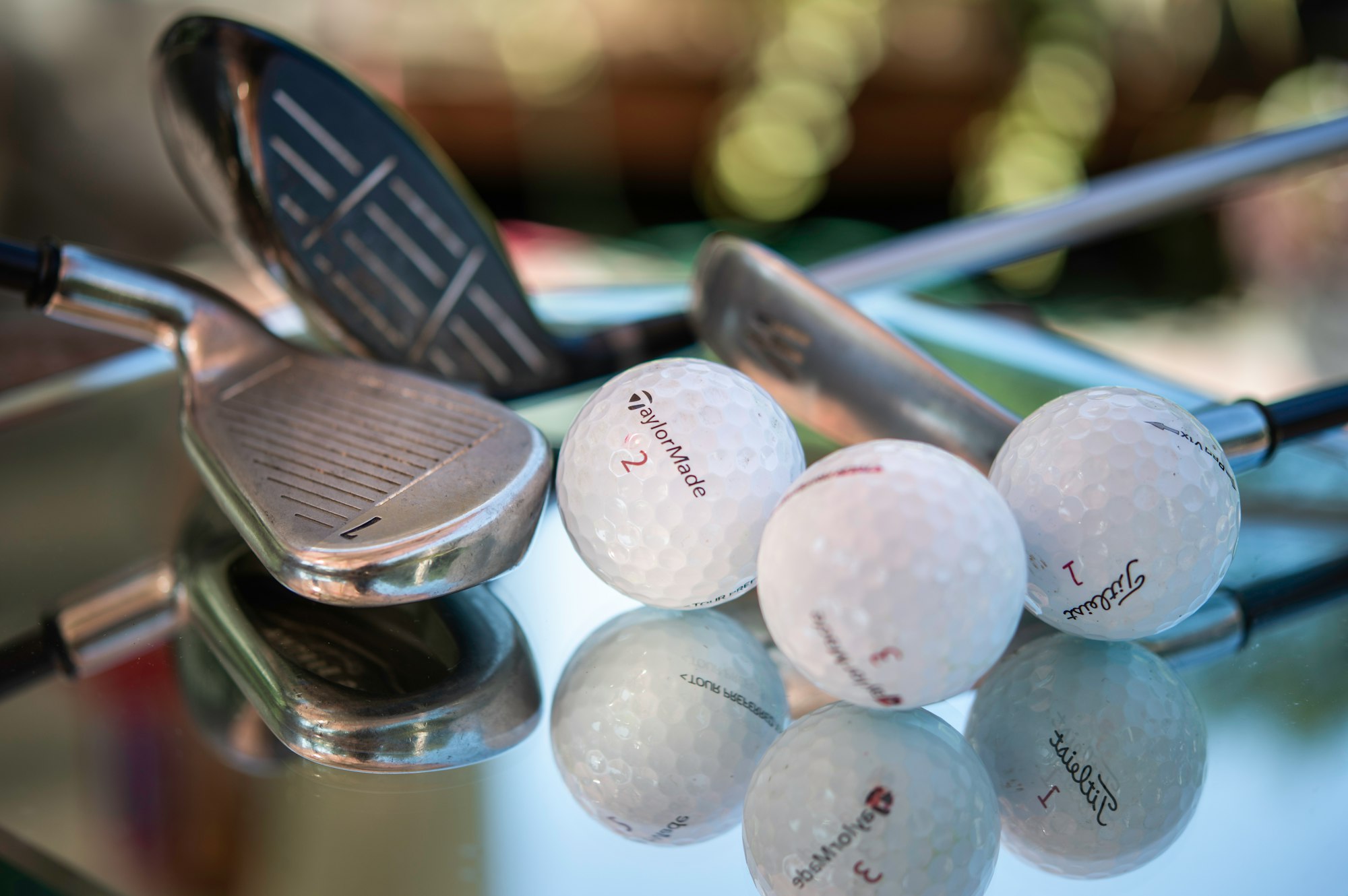
Material Composition
The material composition of a driver plays a significant role in its overall performance. Different materials offer distinct benefits and drawbacks, so it's crucial to understand their impact before making a purchase. Here are the key factors to consider:
- Titanium: Titanium is widely used in modern drivers due to its lightweight yet durable nature. This material allows for larger golf club clubheads with higher moment of inertia (MOI). Resulting in increased forgiveness and accuracy on off-center hits.
- Carbon Composite: Carbon composite drivers combine the strength of carbon fiber with other lightweight materials, enhancing swing speed and distance potential. These drivers often feature adjustable weights. This allows players to customize launch conditions for optimal performance.
- Steel: While less common than titanium or carbon composite, steel drivers can still be found in some golfers' bags. Steel offers excellent durability but tends to be heavier. This can limit swing speed and compromise distance potential.
Loft Angle
Determining the ideal loft angle based on your swing speed and launch conditions
Choosing the right loft angle for your golf driver is crucial for achieving optimal distance and accuracy. Your swing speed and launch conditions play a significant role in determining the ideal loft angle.
- Swing Speed: For golfers with higher swing speeds (above 100 mph), a lower loft angle, typically between 8-10 degrees, is recommended. This allows them to maximize distance by reducing spin.
- Launch Conditions: If you tend to hit low shots or struggle with getting the ball airborne, a higher loft angle, such as 12-14 degrees, can help increase launch. It provides more lift to get the ball in the air quicker.
It's important to note that these recommendations are not set in stone and may vary depending on individual preferences and different driver models.
Experimenting with various loft angles during practice sessions or consulting with a club-fitting professional can further refine your choice for maximum performance on the course.
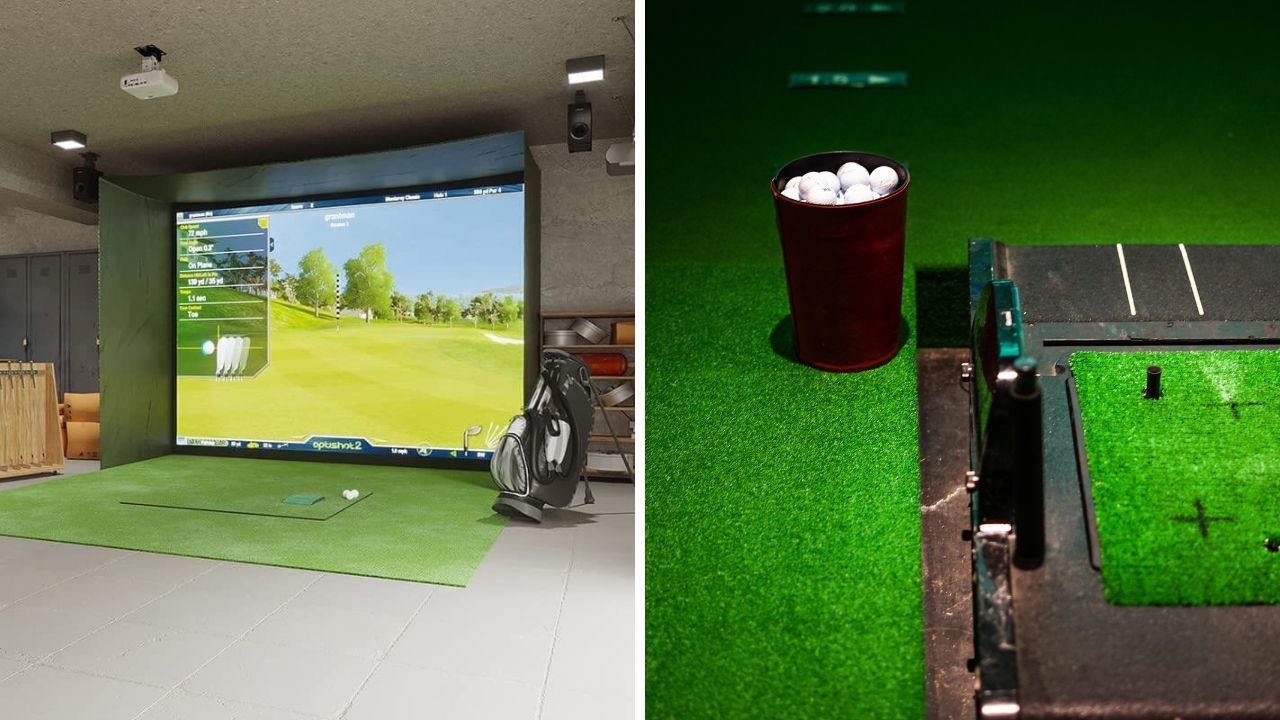
Shaft Flex
Choosing the right flex for your driver is crucial in maximizing both distance and accuracy. The flex refers to how much the shaft bends during your swing, and it directly affects how the clubhead connects with the ball at impact.
Factors affecting shaft flex:
- Swing speed: Players with a slower swing speed should opt for a more flexible shaft, as it allows for greater energy transfer from the club to the ball.
- Tempo: If you have a smooth, rhythmic swing tempo, a softer flex may be suitable as it provides better control and feel.
- Strength: Exceptionally strong players usually benefit from stiffer shafts that can handle their powerful swings without losing control.
Finding your ideal shaft:
To determine which type of flex will optimize both your distance and accuracy, consider getting fitted by a professional or using a launch monitor.
These tools will analyze your swing characteristics such as swing speed, launch angle, spin rate, and dispersion pattern. Helping you make an informed decision about which flex suits you best. Remember that finding the right balance between flexibility and stability is key to achieving consistent results off the tee.
Clubhead Design
Clubhead Design: Exploring Different Golf Driver Designs and Their Effects on Ball Flight
Traditional Design:
- The traditional design features a rounded clubhead shape with a large sweet spot.
- It offers forgiveness and stability, making it ideal for beginners or players looking for consistency.
- This design promotes a lower center of gravity, resulting in higher ball trajectory and increased carry distance.
Oversized Design:
- The oversized design has an enlarged clubhead volume, providing a larger hitting area.
- It enhances forgiveness by reducing the chances of mishits, perfect for high handicappers.
- With a higher moment of inertia (MOI), this driver minimizes the effects of off-center hits, leading to straighter drives.
Adjustable Weighting System:
- Drivers with adjustable weighting systems allow golfers to customize their trajectory and shot shape.
- Rearward weight placement increases forgiveness while forward weight distribution promotes lower spin rates for more control off the tee.
- This feature is favored by experienced golfers who want precise control over their ball flight.
Remember that each player's swing mechanics impact which clubhead design suits them best. Experimenting with different designs is key to finding your optimal driver.

Adjustable Features
Customizable Weights for Enhanced Performance
drivers with adjustable weights offer players the ability to fine-tune their swing. By strategically placing different weight configurations, golfers can maximize distance and accuracy.
Adjusting the weights can help correct a slice or hook, allowing for a straighter shot off the tee. This customizable feature is especially beneficial for novice golfers who are still refining their swing mechanics.
Hosel Adjustability for Personalized Launch Conditions
The hosel adjustment in a driver allows players to change loft and lie angles to optimize launch conditions. By altering these settings, golfers have greater control over trajectory and spin rates during ball flight.
A higher loft promotes easier lift while a flatter lie angle may encourage more forgiveness on off-center strikes. With an adjustable hosel mechanism, golfers can adapt their driver according to course conditions or personal preferences without having to invest in multiple clubheads.
Benefits of Adjustable Features:
- Fine-tune swing mechanics by adjusting weight configurations.
- Correct slices or hooks by optimizing ball flight.
- Enhance distance and accuracy through personalized adjustments.
- Achieve optimal launch conditions with customizable loft and lie angles.
- Adapt driver performance based on course conditions or personal preference without purchasing additional clubheads
Center of Gravity
The center of gravity (CG) of a driver plays a crucial role in determining the launch angle and spin of the ball.
- The CG refers to the point within the clubhead where all its weight is concentrated.
- A low CG placement leads to higher launch angles and increased distance, as it helps lift the ball off the ground more easily.
- On the other hand, a high CG placement produces lower launch angles, which can be beneficial for players looking to maximize control and accuracy.
Furthermore, CG placement also affects spin characteristics:
- A forward CG position reduces backspin on impact, resulting in less loft but greater roll upon landing.
- Conversely, a rearward CG position generates more backspin for additional lift and greater carry distance.
To choose a driver that best suits your game, consider how different placements of the center of gravity will influence your desired launch angle and the ideal amount of spin. Experimentation may be necessary to find the optimal combination that enhances both distance and control.
Moment of Inertia
Moment of Inertia: The Role of MOI in Forgiveness and Off-Center Hits
Golfers often experience off-center hits while using a driver, leading to less accurate shots and reduced distance. However, understanding the concept of Moment of Inertia (MOI) can greatly improve your game.
What is a Moment of Inertia?
Moment of Inertia refers to a clubhead's resistance to twisting when struck away from its center. It plays a crucial role in forgiveness because clubs with higher MOI are more resistant to rotation upon impact. As a result, these drivers are forgiving towards mishits, reducing the loss in accuracy and distance.
The Benefits of Higher MOI
By choosing a driver with a higher MOI, golfers can compensate for their imperfect swings and still achieve impressive results on the course.
These drivers provide better stability during impact due to their increased resistance against twisting motions caused by off-center strikes. Golfers can thus expect greater forgiveness even if they fail to find the sweet spot consistently.
Understanding the role that Moment of Inertia plays in forgiveness and off-center hits empowers golfers to select a driver that enhances their gameplay capabilities.
By prioritizing high MOI drivers, you can unleash your potential on the fairway, delivering consistent shots with improved accuracy and distance despite occasional mishits.
Shaft Length
Finding the Right Balance Between Distance and Control
When choosing a driver, one key factor to consider is the length of the shaft. A longer shaft typically allows for greater distance off the tee, as it creates more clubhead speed. However, this increased distance often comes at the expense of accuracy and control.
On the other hand, a shorter shaft provides better control over your shots, allowing you to hit more consistent drives. It may sacrifice some distance compared to a longer club but can greatly improve your accuracy on narrower fairways or when navigating hazards.
To find the optimal balance between distance and control in your driver, it's crucial to consider factors such as your swing speed, skill level, and personal preferences.
While longer-shafted drivers might benefit players with higher swing speeds seeking maximum yardage off their tee shots, those with slower swings or beginners might benefit from shorter clubs that prioritize precision over power.
Ultimately, striking a balance between distance and control is essential for success on the golf course – choose wisely!
Shaft Weight
Impact of Shaft Weight on Swing Speed and Shot Dispersion
Shaft weight plays a crucial role in determining the swing speed and shot dispersion of a golfer.
- Lighter shafts tend to increase swing speed, allowing for faster clubhead rotation through impact. This can result in greater distance off the tee.
- However, lighter shafts can also lead to increased shot dispersion if not properly controlled since they may require more precise timing and coordination from the golfer.
- On the other hand, heavier shafts typically promote better control over shot direction due to their ability to resist excessive movement during the swing.
- Nevertheless, the heavier club may impede swing speed, restricting maximum power generation.
Considering these factors, finding the right balance between lightness for speed and heaviness for control is essential when selecting a driver's shaft weight.
A thorough understanding of personal preferences, skill level, and physical capabilities will greatly aid in making an informed decision that optimizes both swing speed and shot dispersion.
Ultimately, finding that perfect equilibrium will play a vital role in maximizing overall performance on the golf course
Golf Driver Grip Size
Finding the Perfect Fit
When it comes to choosing a driver, one aspect that often gets overlooked is the grip size. However, finding the right grip size is crucial for both comfort and consistency in your swing.
Having a grip that is too big or too small can greatly affect your ability to properly control the club. A too-big grip may cause tension in your hands and arms, leading to an inconsistent swing path. On the other hand, a grip that is too small may result in you gripping the club tightly, which can also lead to inconsistency.
To determine your ideal grip size, start by measuring your hand size. Use a tape measure or ruler to measure from the base of your palm to the tip of your middle finger.
Once you have this measurement, refer to a sizing chart provided by golf manufacturers or consult with a professional club fitter who can recommend the appropriate grip thickness for you.
Remember, finding the right grip size shouldn't be overlooked when choosing a driver. It's an important factor in achieving comfort and maintaining consistent performance on every swing.

Key Points:
- The right grip size enhances both comfort and consistency.
- Too large grips cause tension while smaller grips promote tightened holds.
- To measure hand size accurately, draw a line from the base of your palm to the midpoint on top of your middle finger and compare it to the manufacturer's charts or opinions obtained through a consultation process to ensure correctness.
Launch Conditions
Launch Angle and Spin Rate are Two Critical Factors
- Launch angle: This refers to the upward or downward trajectory of the ball when it leaves the clubface. The ideal launch angle for maximum distance varies depending on your swing speed and clubhead characteristics, but it generally falls between 9 to 13 degrees. A too-high or too-low launch angle can result in lost distance, as well as increased sidespin leading to less accuracy.
- Spin rate: Spin rate is the amount of backspin or topspin on a golf ball after impact. High spin rates are beneficial for players who need more control, as they help balls stop quickly on greens. However, excessive backspin can lead to shorter distances off the tee, while insufficient backspin may cause inadequate lift resulting in poor carry and roll.
Achieving an optimal balance between launch angle and spin rate requires considering various factors such as swing mechanics, equipment specifications, and course conditions.
It's crucial to understand how these elements affect each other to make educated decisions when choosing a driver that suits your game style best
Budget Impact
Budget Considerations
When choosing a driver, it is important to find one that fits your budget without sacrificing performance. Here are some key points to consider:
- Price point: Determine how much you are willing to spend on a driver. Set a realistic budget based on what you can afford.
- Research options: Look for drivers that fall within your price range and compare their features and specifications. Pay close attention to reviews from other golfers who have used the drivers, as they can provide valuable insights.
- Consider long-term value: While it may be tempting to opt for the cheapest option available, keep in mind that investing in a high-quality driver can provide long-term value by lasting longer and potentially improving your game.
Personal Preference
The Significance of Trying Out Different Drivers
Finding the driver that is right for you is crucial in golf, as it directly impacts your performance on the course.
Trying out different drivers allows you to determine what feels comfortable and natural for you. Everyone has a unique swing and playing style, so what works for one golfer may not work for another.
By experimenting with different drivers, you can assess factors such as clubhead size, flex, and loft angle. These variables affect how the ball travels off the tee and how much forgiveness the driver provides when shots are not hit perfectly.
Testing multiple options gives you a better understanding of which driver suits your needs and maximizes your strengths while minimizing weaknesses.
It's important to note that making an informed decision about your driver requires firsthand experience with various options. Simply relying on recommendations or reviews may not guarantee the right fit for your game.
Taking the time to try different drivers is an investment that can improve your overall performance and enjoyment of the sport. So don't be afraid to experiment until you find what feels right for you!
Conclusion
Finding the best golf driver for beginners in 2023 can greatly impact your golf game. To start, consider your swing speed when choosing the ideal flex and loft of the driver.
Getting the right balance point of the driver is essential for stability and control during your swing. Opt for a driver with a higher loft to launch the ball higher, making it easier to hit with accuracy.
Modern drivers are designed with adjustable loft features to fine-tune your shots according to course conditions. When buying a new driver, consider the length, as drivers typically measure around 48 inches.
With a well-fitted driver, you can strike the best balance of distance and forgiveness, giving you the best chance of success on the golf course.
Finding the right golf driver for beginners involves analyzing various factors, such as the center of gravity (CG) and the sole design. A driver with a lower CG can promote a higher launch and increased distance.
Additionally, selecting a driver that is easy to use and forgiving can be beneficial as you develop your swing. Looking for a new driver can be overwhelming with the array of options available, but researching and comparing different models can help you find the best driver for your unique game.
When choosing a driver off the rack, ensure that its length matches your swing mechanics and provides optimal control and consistency. Today's drivers are made with innovative materials, improving both distance and accuracy.
The length of a driver affects your swing, so consider finding a driver with a length of around 48 inches to strike the best balance of power and control.
As you look for a driver that best suits your game, take note of the driver's characteristics, such as the loft and shaft flexibility. These factors can significantly impact your ball flight and overall performance.
With the correct driver, you can confidently hit a golf ball off the tee and set yourself up for success on the course. Remember that the best driver is one that complements your swing and helps you achieve your golfing goals in 2023 and beyond.
FAQs: How to Choose a Driver
What factors should I consider when selecting a driver?
When selecting the best golf drivers, you should consider factors such as the golf club's driver head, loft, shaft type, flex, and your swing speed. These elements play a crucial role in determining the performance and suitability of a driver for your game.
How do I determine the right driver loft for my game?
The proper driver loft depends on several factors, including your golf driver swing speed and desired launch trajectory. Generally, beginners and players with slower swing speeds benefit from higher lofted drivers, while players with faster swing speeds may prefer lower lofted options.
Which type of shaft material should I choose?
When selecting a driver shaft, you have two primary options: graphite and steel. Graphite is lighter and offers more flexibility, making them suitable for players with slower swing speeds. Steel shafts, on the other hand, provide more control and are favored by players with higher swing speeds.
What are forgiving drivers and why are they important for beginners?
The best golf drivers for high handicappers are forgiving and feature design elements that help minimize the effects of off-center hits. These drivers have a larger sweet spot, which increases the chances of hitting the ball effectively even if you don't make perfect contact. The best golf driver for seniors and beginners are forgiving and can help build confidence and improve overall performance.
How do I determine the right driver length?
When choosing a driver, it's essential to consider the right shaft length. The length should be based on your height and the distance between your wrist and the ground. Longer drivers may offer more distance potential, but they can also be more challenging to control. Proper length will help you play your best golf.
How can I find a driver for my swing speed?
To find your best driver, understanding your swing speed is crucial. A lower swing speed may require a more flexible shaft, while a higher swing speed may benefit from a stiffer shaft. It's advisable to visit a professional club fitter who can accurately measure your swing speed and recommend the appropriate driver.
What role does the club head speed play in choosing a driver?
Club head speed refers to the speed at which the club head strikes the ball during impact. It plays a vital role in determining the distance and trajectory of your shots. Different drivers are designed to optimize performance for various club head speeds, so it's essential to consider this factor when selecting a driver.
Thank you for visiting, and we hope to see you back soon!

